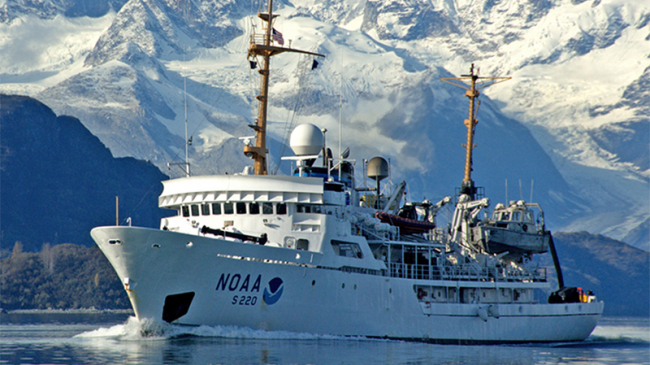
Lt. Cmdr. John Rossi at the controls of NOAA's WP-3D Hurricane Hunter aircraft during a flight into Hurricane Lane on August 20, 2018. (Image credit: NOAA)
As Hurricane Lane churned toward Hawaii, NOAA deployed two of the agency’s “hurricane hunter” aircraft, a Lockheed WP-3D Orion (“Kermit”) and Gulfstream IV-SP (“Gonzo”), from Honolulu starting August 19 to collect data vital to determining the storm’s strength and predict its path as it moved west. Operating out of Daniel K. Inouye International Airport, the aircraft have been using Doppler radar and air-dropped sensor probes to measure conditions both in and around the hurricane, including wind speed, wind direction, temperature, pressure, and humidity.
The Gulfstream IV, a high-speed, high-altitude jet, has been sampling the environment around Hurricane Lane, including the winds that are steering it, while the four-engine WP-3D Orion turboprop has been passing directly through the storm at lower altitudes, flying right into and through its eye. During their flight on August 21, the crew passed through Lane’s eyewall, a Category 5 storm at that time, and captured video from the eye of the hurricane. Known as the “stadium effect,” the clouds of the eyewall towered over and around the aircraft.
Forecasters at the NOAA National Weather Service’s Central Pacific Hurricane Center have been using data from these eight-hour flights in their forecasts. Flight crew from NOAA’s Office of Marine and Aviation Operations and NOAA’s Atlantic Oceanographic and Meteorological Laboratory processed and transmitted data from the aircraft, which will also be used to improve our understanding of hurricanes, with the goal of improving storm track and intensity forecasts.
Kermit was the first reconnaissance plane to fly through Hurricane Lane and it was also the first time a NOAA WP-3D Orion had ever flown into the eye of a Central Pacific hurricane.
Crewed by a team of NOAA Corps officers and civilian meteorologists, engineers, and technicians, the aircraft are based at the NOAA Aircraft Operations Center in Lakeland, Florida.
Media contact
David Hall, 301-713-7671




